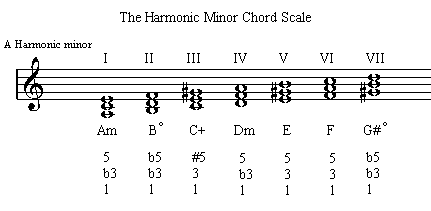
The important thing to remember when considering scales is that they can be transposed with ease. A mode can be referred to as a scale when organised, but doesn’t have the same ability to be considered a ‘key’. Move up to D, and if you simply go from D-D without hitting a black note, you’ll be playing the Dorian mode. The white notes from C-C make a simple C major scale. One way to look at scales is to imagine a piano.

Today, we’re looking at the Harmonic Minor Scale (which we’ll get to in a moment) but there are hundreds more scales in existence. They don’t mean the same thing, but for basic understanding, you don’t need to worry about the nuances. While we’ll use the word ‘scale’ throughout this guide, remember that by all intents and purposes, the word is effectively a synonym for ‘key’. For example, the D Major key is made up of the notes D, E, F#, G, A, B and C#, so the D Major scale is simply these notes arranged in ascending/descending order. Many scales are just the notes of a key organised into a row. In general, scales can be ascending or descending, and mean the same thing either way (though we’ll look at the melodic minor scale in a future guide, as this one changes when ascending and descending).

In general, a scale is simply a series of notes arranged by pitch. The most important first thing to be aware of when approaching the Harmonic Minor Scale, is what a scale actually is. If you’re on the lookout for a way to spice up your melodies, chords and improvisation look no further than this useful guide. In this important guide, I’ll be explaining how you can use the Harmonic Minor Scale within your guitar playing. You’ve probably become rather used to standard major and minor scales, but were you aware of the different types of minor scales that can completely change your composition and playing? One of the most important parts of a guitarist’s toolbox is the humble scale. At BeginnerGuitarHQ, it’s our mission to teach you how to play the guitar as well as possible.


 0 kommentar(er)
0 kommentar(er)
